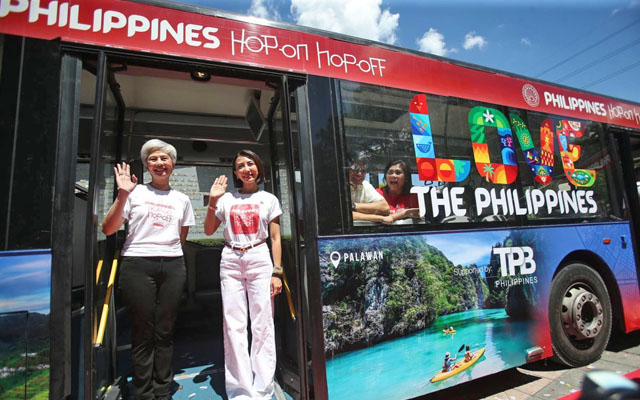Transit Advertising Philippines: Reach Thousands of Commuters Daily
Transit Advertising Philippines: Reach Thousands of Commuters Daily
Blog Article
Comprehending the Duty of Transportation Advertising And Marketing in Enhancing Brand Name Visibility and Customer Engagement
Transportation advertising and marketing has arised as a pivotal component in the advertising and marketing landscape, supplying one-of-a-kind chances for brand names to raise their visibility and involve customers properly. With the capability to get to a diverse and restricted target market throughout their daily commutes, these advertising approaches are not merely regarding visibility; they are about producing meaningful connections with prospective consumers. As we explore the complex benefits and ingenious techniques within transit advertising, it becomes crucial to think about just how these aspects collectively influence consumer assumption and actions, questioning concerning their long-term effect on brand name commitment.
Definition of Transportation Advertising And Marketing
Transit advertising refers to the practice of advertising products, solutions, or brand names through advertisements positioned in and around mass transit systems. This kind of advertising and marketing encompasses a range of placements, including posters on buses and trains, digital displays at transit stations, and covers on the exterior of lorries. It intends to reach a varied target market, profiting from the high foot web traffic related to public transportation.
Transportation advertising is purposefully placed to record the attention of commuters, that typically spend considerable time traveling or waiting. By incorporating promotions into the everyday regimens of individuals, brand names can create a lasting impact and foster brand name acknowledgment. The medium is specifically effective in urban settings, where public transportation is a key mode of travel.
In addition, transportation marketing can facilitate local targeting, permitting companies to get to particular demographics based upon transportation routes and station places. As city populations expand and using public transportation rises, this marketing technique has gotten prestige as an essential element of integrated marketing strategies. The vibrant nature of transportation marketing, integrated with its capability to involve customers in a restricted setting, highlights its relevance in contemporary marketing methods.
Benefits of Transportation Marketing
The performance of transit advertising depends on its capability to deliver a multitude of advantages to brands looking for to enhance presence and interaction. Among the primary benefits is the considerable reach it provides; transportation ads can efficiently target diverse demographics across city locations, getting to both pedestrians and commuters alike. This broad exposure dramatically improves brand name understanding.
One more benefit is the high regularity of perceptions. As transportation vehicles follow well-known courses and stop at numerous areas, they develop repeated exposure that reinforces brand name messages. This frequency fosters experience, which is important in consumer decision-making.
Transit advertising is also economical contrasted to various other media platforms. Given its extensive reach and capacity for high impressions, brands commonly experience a lower price per thousand perceptions (CPM), maximizing their advertising spending plan.
Additionally, transportation advertisements can develop a sense of neighborhood connection. By straightening with regional transit systems, brand names can reverberate with local target markets and foster a feeling of local satisfaction. This local technique enhances brand commitment and engagement, making transportation advertising an engaging choice for services intending to solidify their presence out there.

Efficient Techniques for Transit Campaigns
To optimize the influence of transit campaigns, brands need to leverage critical planning and execution customized to their target market. Initially, determining the market qualities of the target market using public transportation is crucial. This enables brand names to produce personalized messaging that reverberates with potential clients.
Following, picking the appropriate transit tools is important. Whether making use of bus wraps, subway posters, or digital screens, each medium has one-of-a-kind advantages that can boost visibility. For instance, vibrant visuals on bus wraps can attract attention, while digital advertisements can be upgraded frequently to mirror prompt promos.
Furthermore, integrating a cohesive branding technique across transportation platforms guarantees consistency and reinforces the brand's identity. Using remarkable taglines and attractive designs will reinforce brand name recall among commuters.
Last but not least, timing is a crucial variable in executing successful transportation campaigns. Introducing projects during peak travel hours or regional occasions can considerably boost other presence and interaction. By using these approaches, brand names can efficiently harness the potential of transit advertising and marketing, cultivating higher understanding and connection with their target audience. special info Ultimately, a well-executed transit campaign can drive substantial development in brand name presence and customer involvement.

Gauging Impact and Involvement
In reviewing the performance of transit advertising and marketing projects, precise dimension of effect and engagement is crucial for brands looking for to enhance their advertising and marketing methods. Metrics such as reach, frequency, and impacts give fundamental data to evaluate presence. Examining these factors assists identify the amount of prospective customers are revealed to the ads during their day-to-day commutes.
Involvement can be additional evaluated via customer communications, such as web site traffic, social networks points out, and direct reactions to calls-to-action included in the ads. Utilizing devices like QR codes or special Links can help with tracking of customer actions directly linked to transportation campaigns. Surveys and feedback systems also function as beneficial techniques to gather qualitative data on customer assumptions and recall of the advertisement.
Moreover, progressed analytics and acknowledgment versions can correlate transit direct exposure with subsequent purchasing behavior, original site supplying understandings right into the return on financial investment. By utilizing a detailed method that integrates quantitative and qualitative actions, brands can develop a nuanced understanding of their transportation advertising influence. Inevitably, this data-driven strategy allows brand names to fine-tune their campaigns, guaranteeing they reverberate properly with target audiences and improve overall brand name visibility.
Study of Effective Campaigns
Successful transit ad campaign offer as compelling examples of exactly how effective strategies can elevate brand name exposure and involvement. Transit Advertising Philippines. One remarkable situation is the "I Love New york city" campaign, which changed the city's picture and drew in countless vacationers. By using train ads, billboards, and bus wraps, the campaign produced a strong, cohesive brand identity, leading to a substantial uptick in tourism and neighborhood company patronage
An additional excellent campaign is Coca-Cola's "Share a Coke" effort, which leveraged transportation advertising to individualize the brand experience. By featuring prominent names on advertising materials throughout numerous transit platforms, Coca-Cola fostered a much deeper emotional link with customers, urging them to share their experiences on social media sites.
Additionally, the "Got Milk?" campaign efficiently made use of public transport advertisements to get to a broad audience, reinforcing the message of the significance of milk in a balanced diet regimen. The campaign saw a quantifiable increase in milk usage in target demographics.
These instance research studies highlight that when carried out attentively, transit marketing can dramatically enhance brand visibility, foster customer engagement, and drive quantifiable results, showing its essential function in modern-day marketing methods. - Transit Advertising Philippines
Conclusion
In verdict, transportation advertising offers as a vital tool for enhancing brand visibility and cultivating customer involvement. Eventually, the ability to measure engagement and evaluate effective instance studies underscores the efficiency of transportation advertising in driving brand commitment and customer interactions.
Transportation marketing has actually arised as a crucial element in the marketing landscape, providing special opportunities for brands to elevate their exposure and involve consumers successfully.Additionally, transportation advertising and marketing can promote local targeting, enabling companies to reach certain demographics based on transportation courses and station places.In reviewing the efficiency of transit marketing projects, exact dimension of impact and involvement is vital for brands seeking to maximize their advertising and marketing approaches.Effective transit advertising and marketing projects offer as compelling examples of just how effective techniques can raise brand exposure and engagement.In conclusion, transportation marketing serves as an important device for boosting brand name presence and promoting consumer involvement.
Report this page